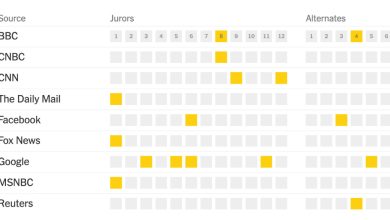Hello, fellow kids: Italian politicians turn to TikTok for votes.

Italian politicians are on a virtual hunt for undecided voters.
Over the summer, as polls suggested that most of those who had not yet picked a side were under 30, party elders took it to the next level: TikTok.
This month, Silvio Berlusconi, 85, who served four times as Italy’s prime minister, landed on the social media platform that is mostly popular among the young, explaining why he was there at his age.
“On this platform, you guys are over five million, and 60 percent of you are less than 30. I am a little envious,” Mr. Berlusconi said, raising and lowering his voice for dramatic effect. “We will talk about your future.”
The video had 9.6 million views, raising eyebrows among some users.
“You are not so stupid that a video on TikTok is enough to vote for you,” said Emma Galeotti, a young TikTok content creator. “You send the message that we, young people, are so malleable and bonkers.”
But Mr. Berlusconi’s communications team did not give up. His profile is brimming with a mix of snapshots from his TV appearances and classic Berlusconi jokes, as well as political messages recorded in his studio, where he is seen wearing classy blue suits — and often ties.
Viewers have taken notice of his cultivated appearance.
“What’s your foundation cream?” one asked. “The cream is too orange, more natural tones are better,” another wrote.
“The rebound was comic or grotesque, but being on TikTok allowed him to be central to the electoral debate,” said Annalisa Ferretti, the coordinator of the social media division at the Italian advocacy group FB & Associati, who noted that the number of people following Mr. Berlusconi’s profile had surpassed 3.2 million in three weeks.
“The problem is that this generation rejects the political class overall,” she said, adding that such social media popularity did not directly translate into votes.
Other politicians have chosen different paths. Matteo Salvini, 49, of the far-right League party, who has been on TikTok for years and has 635,600 followers, uses the platform mostly as a mouthpiece for his meat-and-bone topics — security and immigration.
Giorgia Meloni, 45, the leader of Brothers of Italy and possibly the next prime minister, does not seem to be doing as well on TikTok, despite her successful electoral campaign. She has 197,700 followers.
University students seem to like the leader of the centrist party Action, Carlo Calenda, 49, who posts short political messages, answers questions received on the platform and discusses books, Ms. Ferretti said. But he has only about 24,300 followers.
The center-left Democratic Party is the only party that offers a plurality of voices on TikTok. They post thematic videos with topics discussed by politicians who are the symbol of such issues, like Alessandro Zan, 48, for the civil rights battle. Enrico Letta, 56, a party leader, recently encouraged users to go vote — for whomever they liked. “The others should not decide for your future,” he said.
Despite the efforts of politicians to reach a different audience, abstention still seems to be the main threat to the parties, and to Italian democracy.
“They used to say, ‘Squares are full and the ballot boxes are empty,’” Ms. Ferretti said. “Now it’s more social media is full, and the ballot boxes are empty.”




